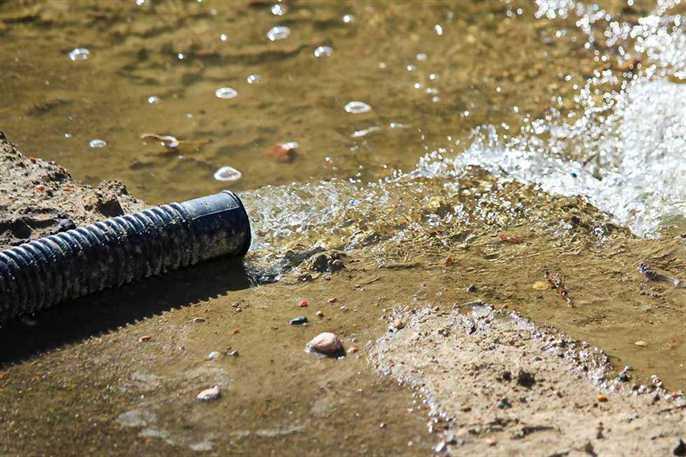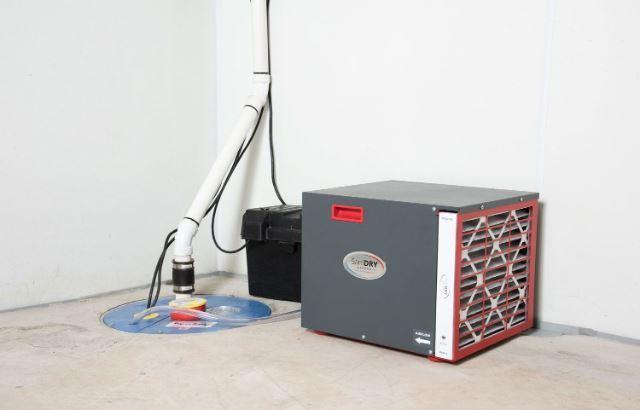Quick Steps to Servicing Your Sump Pump
Quick Steps to Servicing Your Sump Pump
Blog Article
Have you been on the lookout for ideas on How to Care for Your Sump Pump?

Sump pumps are essential components in lots of homes, especially in areas prone to flooding or extreme moisture. They aid avoid water damages by efficiently getting rid of excess water from cellars or crawl spaces. However, like any other home appliance, sump pumps require regular maintenance to guarantee they function efficiently when needed one of the most. Cleansing your sump pump is an essential part of its maintenance, and comprehending how to do it appropriately can conserve you from costly repair services and possible calamities.
Introduction
Maintaining a tidy sump pump is crucial for its proper performance and long life. Neglecting this vital job can cause obstructions, breakdowns, and ultimately, water damage to your residential property. As a result, discovering exactly how to cleanse a sump pump is essential for property owners that depend on these tools to keep their basements completely dry and protected.
Indications of a Dirty Sump Pump
Understanding when your sump pump needs cleaning is essential for avoiding prospective breakdowns. Some common indications that suggest an unclean sump pump include unusual noises during procedure, decreased water flow, and noticeable debris in the pit. If you notice any of these symptoms, it's necessary to cleanse your sump pump without delay to stay clear of any more issues.
Planning for Cleansing
Prior to you start cleaning your sump pump, it's important to take some security precautions. Start by turning off the power to the pump to avoid any kind of electrical crashes. Additionally, use proper safety gear, such as gloves and goggles, to shield on your own from dirt, debris, and prospective virus.
Understanding the Sump Pump
Prior to diving right into the cleaning process, it's necessary to have a fundamental understanding of exactly how a sump pump works. Typically mounted in a pit or container listed below the basement flooring, a sump pump includes several key parts, including a pump, a float button, and a discharge pipeline. When water gathers in the pit, the float button triggers the pump, which then pumps the water out via the discharge pipe, away from the structure's structure.
Step-by-step Overview to Cleaning a Sump Pump
Shutting Off the Power
Begin by detaching the power supply to the sump pump to avoid any kind of accidents while cleaning.
Looking For Proper Functioning
Before reinstalling the pump, perform a quick examination to make certain that the float switch activates the pump properly. Pour some water into the sump pit and observe the pump's operation. If everything is working properly, you can reconstruct the pump and reconnect the power supply.
Removing Particles and Dirt
Use a bucket or an inside story to get rid of any type of noticeable debris, dust, or sediment from the sump pit. Dispose of the particles effectively to stop it from obstructing the pump or the discharge pipeline.
Cleansing the Pump and Float Change
Once the pit is clear of debris, thoroughly remove the pump from the pit. Check the pump and the float switch for any kind of indicators of damage or wear. Make use of a soft brush or cloth to cleanse the surface areas and eliminate any type of built up grime.
Flushing the System
After cleaning the pump and float button, purge the sump pit with tidy water to eliminate any kind of staying dirt or sediment. This will aid make sure that the pump operates smoothly and successfully.
Maintenance Tips to Maintain Your Sump Pump Clean
In addition to regular cleaning, there are a number of upkeep ideas you can follow to maintain your sump pump in optimal condition:
Final thought
Cleaning your sump pump is an important aspect of its upkeep and makes sure that it runs efficiently when you require it one of the most. By complying with the steps laid out in this guide and incorporating normal upkeep into your routine, you can expand the life expectancy of your sump pump and secure your home from water damage.
6 STEPS ON HOW TO CLEAN A SUMP PUMP PROPERLY
UNDERSTANDING SUMP PUMPS
Your sump pump plays a crucial role in protecting your home by managing and removing excess water. It primarily functions as a “shield”, guarding your basement against the damaging effects of water accumulation. The pump is housed in a sump pit in the lowest part of your basement, and its job is to pump out any water that collects there.
During heavy rainfalls or when snow melts rapidly, water can infiltrate your basement, posing potential risks like flooding, structural damage, and harmful mold growth. Here, the sump pump springs into action, pumping out the intruding water and directing it away from your home.
SAFETY FIRST
Before cleaning, remember to prioritize safety. Disconnect the sump pump from the power source to prevent any accidental electric shocks. Also, wear sturdy gloves to protect your hands from any sharp or dirty components within the pump.
REMOVE THE SUMP PUMP
After ensuring your safety, the next step is to remove the sump pump from its pit. Doing this might require careful maneuvering as you don’t want to damage any pump components. Once removed, clean the sump pit to remove any accumulated debris or sludge.
INSPECT THE PUMP
Inspect the pump for any visible signs of wear or damage. Check the power cord, float switch, and impeller housing. If any components look worn out or damaged, consider replacing them to ensure optimal performance.
CLEAN THE PUMP
Thoroughly clean the pump with warm, soapy water. Make sure to rid it of any dirt, gravel, or other debris that might impede its performance. You can use a toothbrush to clean the small, hard-to-reach parts of the pump.
REINSTALL THE SUMP PUMP
Reinstall the pump into the sump pit Make sure it’s positioned correctly to remove the water effectively Once it’s back in place, reconnect it to the power source TEST THE PUMP
Finally, pour some water into the pit to ensure the pump works correctly. It should start automatically and begin pumping out the water; if it doesn’t, check the power source and the positioning of the pump.
Remember, while cleaning your sump pump is an essential part of home maintenance, hiring a professional plumber for a thorough inspection and cleaning at least once a year is also important. This will ensure that your pump is in optimal condition, ready to protect your home from potential water damage.
BEST PRACTICES FOR CLEANING SUMP PUMP DISCHARGE PIPES
Regular Inspection: Regularly inspect your discharge pipes, especially during heavy rainfall or snowmelt periods. Look for any signs of blockage or damage. Early detection of problems can prevent serious issues down the line. Periodic Cleaning: Over time, sediment and debris can accumulate in the discharge pipes, impeding the flow of water. Regular cleaning helps keep the pipes clear and functioning efficiently. You can use a high-pressure water jet to effectively clean the pipes. Insulation During Winter: In colder climates, discharge pipes can freeze, blocking the outflow of water. Protect your discharge pipes from freezing temperatures by insulating them with foam pipe insulation. This will ensure the sump pump can continue to discharge water even in freezing conditions. Proper Positioning: The discharge pipe should be positioned to direct water away from your home’s foundation. Improper positioning can lead to water seeping back into the basement. Ensure the pipe is long enough and angled correctly. Installation of a Check Valve: A check valve prevents water from flowing back into your sump pit after the pump has pushed it out. Installing a check valve helps maintain the efficiency of your sump pump and reduces the risk of flooding. Minimize Pipe Turns: Every curve or turn in the discharge pipe can decrease the efficiency of water flow. By minimizing turns and bends in your discharge pipe, you can increase the efficiency of your sump pump. https://www.fullspeedplumbing.com/how-to-clean-a-sump-pump-properly9999/

I am just very interested in Cleaning & Maintenance Tips for Your Home's Sump Pump and I'm hoping you enjoyed our page. You should set aside a second to share this post if you appreciated it. I appreciate your readership.
Schedule A Free Estimate Report this page